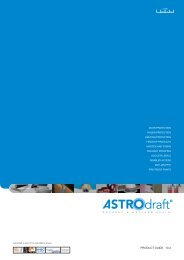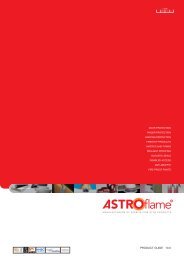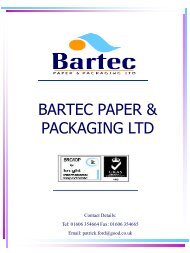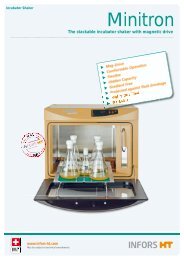Fastening & Assembly Solutions & Technology July 2012
Fastening & Assembly Solutions & Technology July 2012
Fastening & Assembly Solutions & Technology July 2012
You also want an ePaper? Increase the reach of your titles
YUMPU automatically turns print PDFs into web optimized ePapers that Google loves.
FAST JULY <strong>2012</strong><br />
Q & A<br />
Explaining the<br />
characteristics of nylon<br />
Neale Lancaster has been selling fasteners for 25 years. Here he answers some frequently asked<br />
questions about materials and trends he has been asked over the years<br />
Neale Lancaster is sales director of Richco International<br />
Company Ltd, responsible for sales to the UK and<br />
European Distributors. With over 25 years of technical sales<br />
experience working for Richco in Europe, the Far East and<br />
NAFTA regions, Neale leads a team of technical sales<br />
people working with OEM’s to offer standard and custom<br />
fastening solutions in the electronics industry.<br />
22<br />
How would you describe the Richco<br />
product offering?<br />
Since 1954, Richco has been manufacturing and designing<br />
the world’s most comprehensive array of innovative engineered<br />
component solutions. We specialise in predominantly<br />
plastic fasteners including cable management, circuit<br />
board hardware, wire routing products, cable ties, clips,<br />
clamps, LED hardware, grommets, fibre optics, and telecommunication<br />
accessories among others.<br />
What materials can you supply?<br />
A large portion of our products are made from the thermoplastic<br />
nylon.<br />
Nylon is used as a generic name for the polyamide (PA)<br />
group of polymers. We use this because as a general family<br />
the PA group is low cost, rigid, translucent, has good temperature<br />
stability, abrasion and fatigue resistance.<br />
Tell me a little more about the characteristics<br />
of nylon?<br />
All nylons are considered hygroscopic. This means that they<br />
can absorb or release moisture based on environmental conditions.<br />
Nylon is more hygroscopic when compared to most<br />
other polymers. Let’s use a household example: compare the<br />
relative wetness of fabrics when you move clothes from the<br />
washer to dryer. Nylon will be wettest of the synthetics, followed<br />
by polyester, then acrylic. Acrylic clothing will be<br />
almost completely dry after the spin cycle because it absorbs<br />
virtually no water.<br />
Moisture acts as a plasticiser. A Plasticiser is something that<br />
increases flexibility, workability, or stretch ability.<br />
Dimensional and physical property changes take place during<br />
moisture absorption. Moisture absorption and rate of











